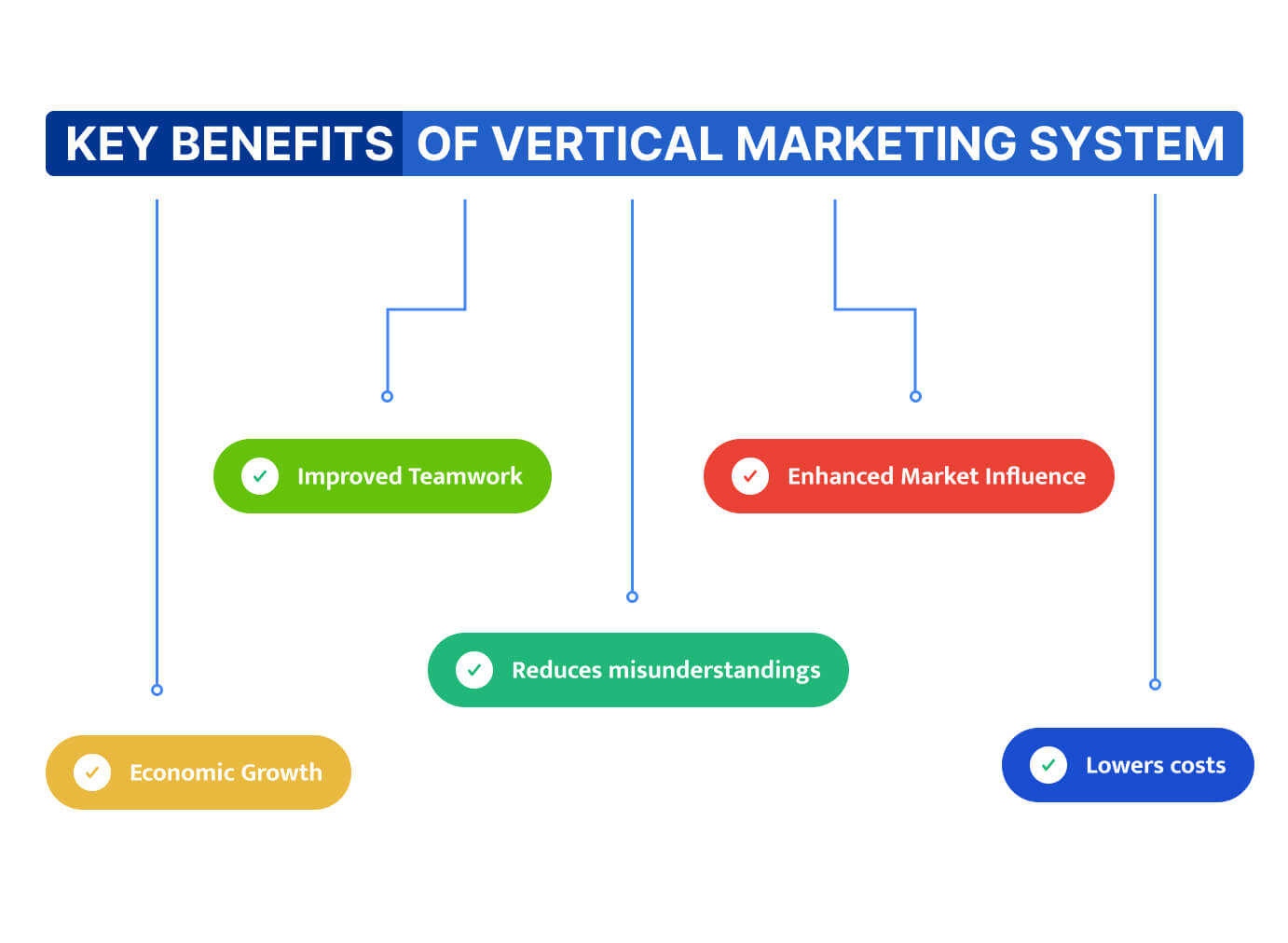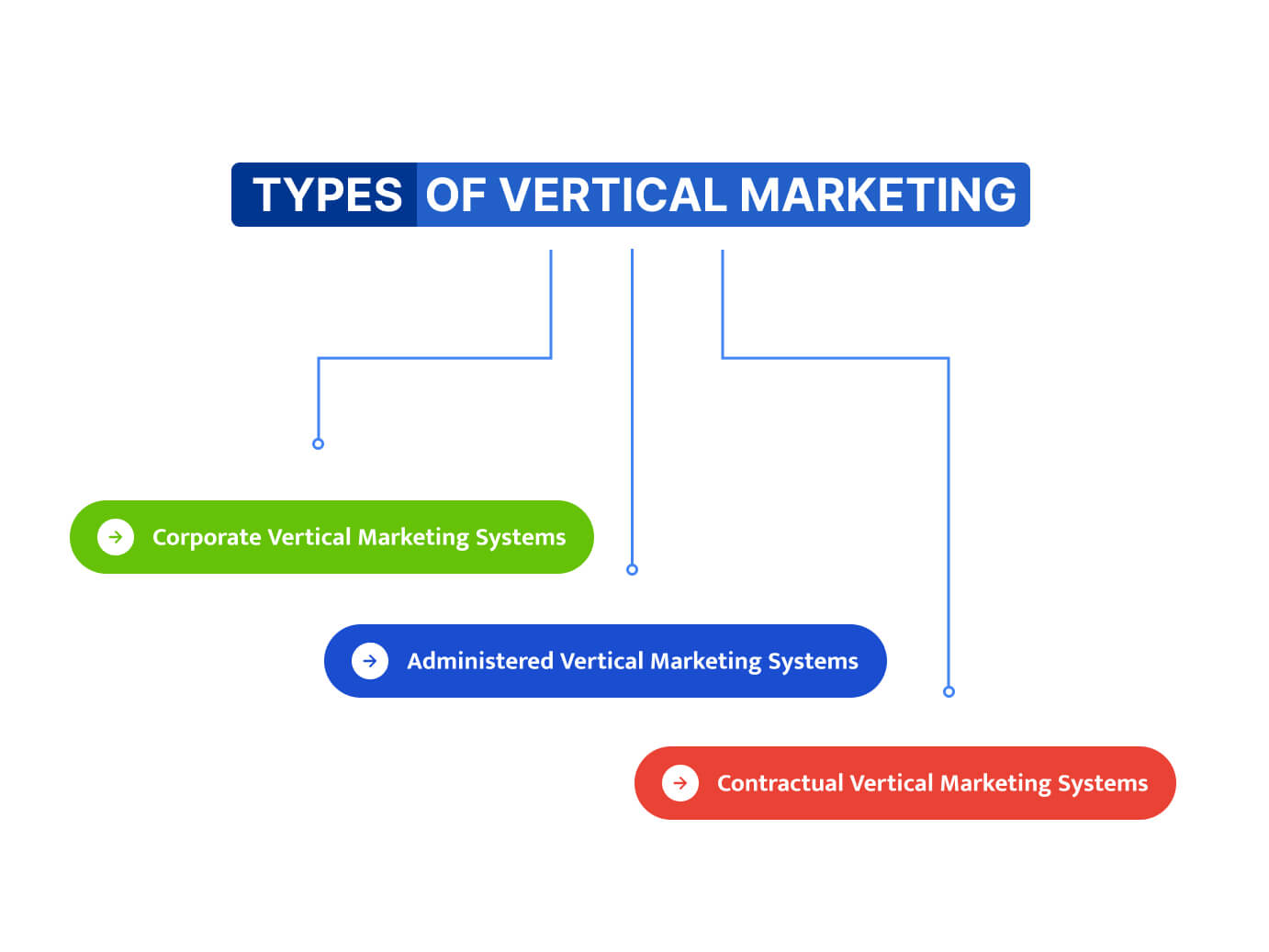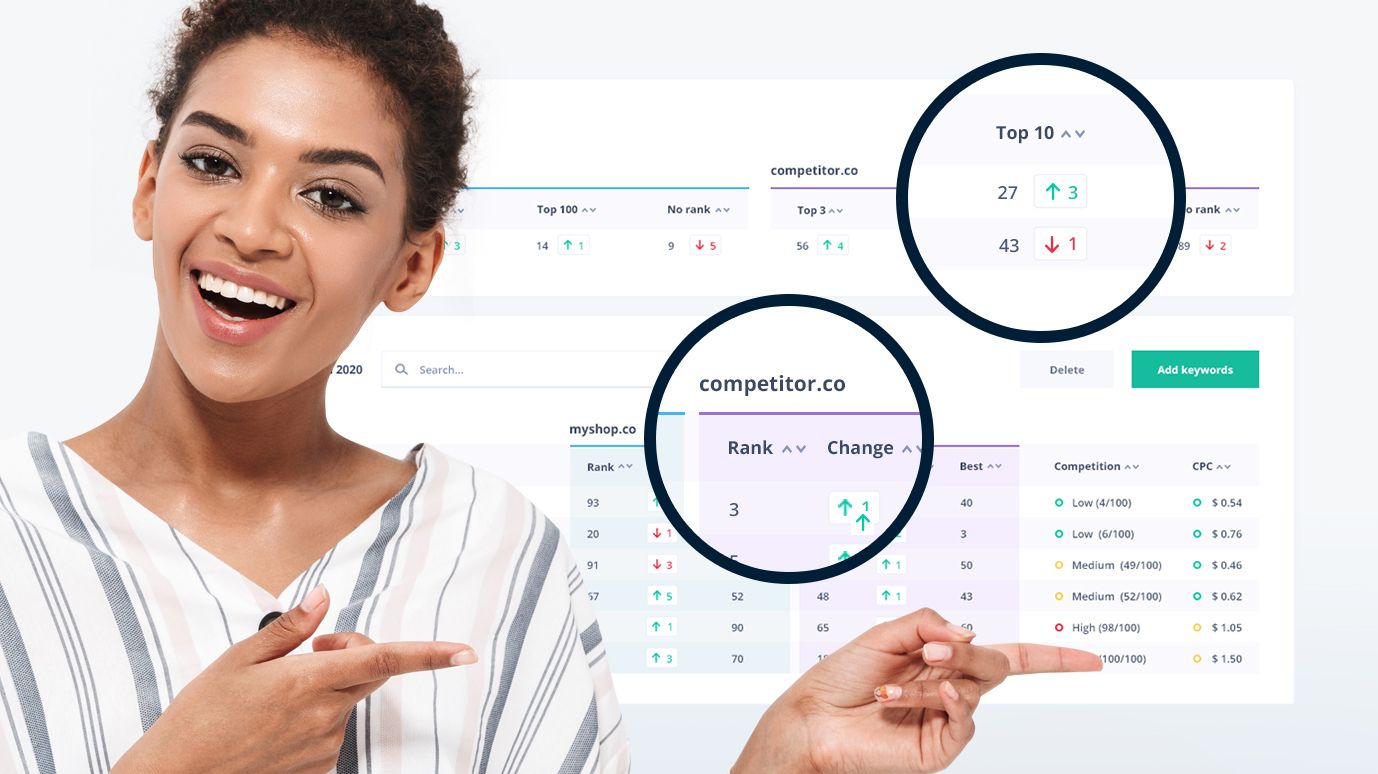
 6 min read
6 min readMaximize Growth & Control: Navigating a Vertical Marketing System for Success
A Vertical Marketing System (VMS) changes how companies work together. Instead of working alone, manufacturers, wholesalers, and retailers team up to improve performance and get products to customers smoothly. This article explains VMS, its different kinds, gives real-life examples, and highlights the advantages for businesses using this approach.
The Core Benefits of a Vertical Marketing System
Gone are the days of the conventional marketing system with its independent and often conflicting business motives. The VMS approach brings a refreshing unity to the table. It's about synergy — a synergistic approach that harnesses shared goals for superior outcomes. With a vertical marketing system, each member is bestowed with greater control throughout the production and distribution journey. This concerted focus not only enhances market share but significantly elevates Return on Investment (ROI) as well.
The main benefits of using a vertical marketing system are:

- More efficient processes: It reduces disagreements, matches up plans, and costs less.
- Better market influence: Companies control the distribution process, which gives them more power in the market.
- Improved teamwork: Manufacturers, distributors, and sellers work together, turning competition into cooperation.
- Ability to grow economically: The system helps businesses grow and save in ways that they can't when the setup is divided.
Working together closely pays off — it strengthens our market position and increases profits for everyone involved.
Types of Vertical Marketing Systems
Vertical marketing systems can be classified into three distinct types:

1. Corporate Vertical Marketing Systems
This version of the Vertical Marketing System (VMS) involves one company controlling different parts of the supply chain, which work together smoothly. Look at Amway, a well-known American company that sells various products, including health supplements and household items. Amway employs its company-controlled VMS to sell products exclusively through its approved channels, integrating manufacturing and distribution within one large company.
Apple Inc. is a prime example of how controlling the entire process from product creation to sales can lead to success. Apple is not just known for its unique product designs, but also for how well its devices work together, its impactful stores, and its customer support. By controlling every step, Apple keeps its quality high and its brand strong, earning customer trust and loyalty. This approach helps Apple stay ahead of the competition by quickly responding to new market trends and customer opinions. Companies that want to use a similar model should focus on making sure their customers have a consistent and positive experience with their brand at every step.
2. Contractual Vertical Marketing Systems
In this model, independent channel members band together under contractual agreements to sharpen their competitive edge and drive collective value. Franchising stands as the poster child for this system. Entities like Pizza Hut and McDonald's empower individuals to operate under their brand mantle, following stringent standards yet retaining a slice of entrepreneurial freedom.
Franchise owners must follow precise rules but gain from strong brand marketing. They work together with the franchise creator, combining local business drive with a well-known brand to grow successfully in the market. This way, businesses using this model often get reliable branding, reach many customers, and have better bargaining power, all aiming for mutual success.
3. Administered Vertical Marketing Systems
This model shows how big companies like Procter & Gamble greatly affect the market. They manage a huge network including manufacturers, wholesalers, and retailers to work more efficiently and effectively, without needing strict contracts. They highlight how strong partnerships based on shared goals are important. Big companies can control supply chain operations by working well with others, making everything run smoother and increasing their market power. To succeed like them, companies should use their size and power to build strong relationships that help everyone involved grow.
Procter & Gamble (P&G) offers an exemplary case study of an administered vertical marketing system. As a multinational giant, P&G works within a vast network of manufacturers, wholesalers, and retailers, all unified not by contracts, but through the influential power of cooperation and mutual business goals. For instance, P&G's leadership in the market enables them to set the tone for retail practices such as product placement, promotions, and pricing strategies. The company's sheer scale allows it to influence the supply chain operations effectively, ensuring that all parties align with its overall marketing objectives. By fostering partnerships based on trust and shared benefits, P&G demonstrates how solid relationships can lead to streamlined operations and a stronger market presence. Businesses looking to emulate P&G's success should focus on leveraging their clout to create harmonious supply chain dynamics, fostering an environment where each member contributes to the collective growth and efficiency.
A Real-World Paradigm: Zara's Mastery of Vertical Marketing
Zara is a prime example of how a company can succeed by controlling every step of their process, from creating products to selling them. They're a leader in fast fashion and show the power of a vertical market – where everyone from makers to sellers works together closely. Zara's success comes from being able to react quickly to changing fashion trends and managing everything tightly to avoid problems.
For any business wanting to grow and stay strong in their market, Zara's way of doing things offers a powerful strategy. By closely controlling your supply chain, like Zara, you can respond fast to changes and push for constant growth, something that's really important in today's fast-changing business world.
How startups can use vertical marketing system?
Startups can greatly benefit from using a Vertical Marketing System (VMS), which aligns the efforts of suppliers and distributors from product creation to customer purchase. This includes using specialized strategies like affiliate and social media marketing to boost sales, PPC marketing for quick ad returns, and SEO to maintain an online presence and grow business.
By working together, everyone involved can ensure the messaging and goals are the same, making things simpler and improving the company's market standing. Starting up can become well-known faster by using a clear story and creating content that connects with people, using the right keywords, and teaming up with reputable sources to build trust.
What is a Vertical Approach in Marketing?
A vertical approach encapsulates a strategic alignment between different levels of the supply chain—manufacturers, wholesalers, and retailers—to streamline operations and provide a more cohesive product and service delivery to the customer. At its core, a vertical marketing system (VMS) forges a partnership that leverages the cumulative strengths of each player, allowing for shared expertise, resources, and data to create a powerful, singular thrust in the market. This approach mitigates inefficiencies often found in traditional horizontal systems, where each entity operates independently and sometimes at cross-purposes.
Particularly, a VMS can lead to enhanced market control, as companies gain greater influence over the distribution process, ensuring that each link in the chain is stable and reliable. By fostering a more collaborative environment, vertical marketing systems enable a unified front that can adapt swiftly to market changes, anticipate consumer needs, and provide superior customer experiences. This strategic alignment results not only in improved service but also in significant cost reductions due to the economies of scale and optimized use of resources.
Final Takeaway
If you have a growing startup or a big international company, using a vertical marketing system can give you what you need for steady growth and great control. In today's fast-changing market, having this kind of unity is essential, not just helpful.

Marcin is co-founder of Seodity
.svg)











